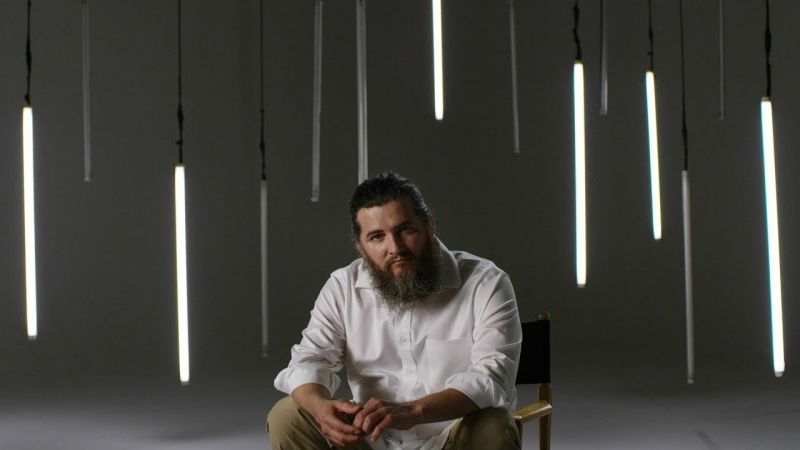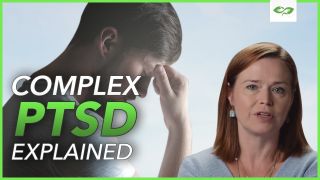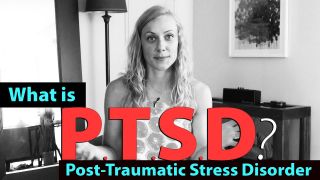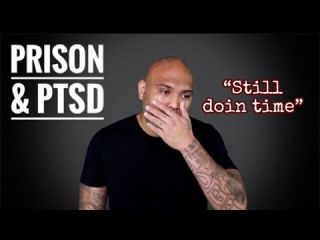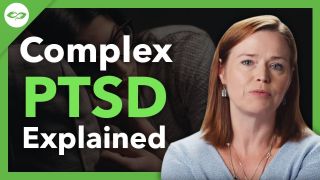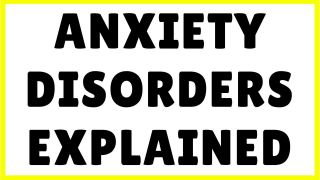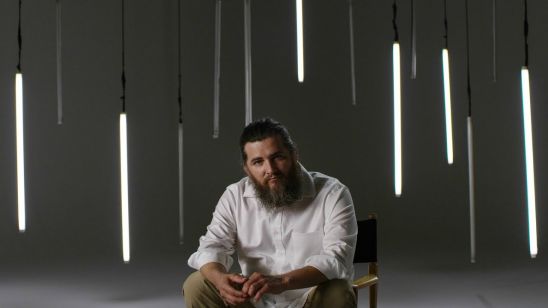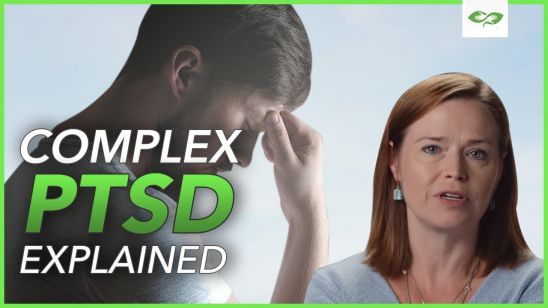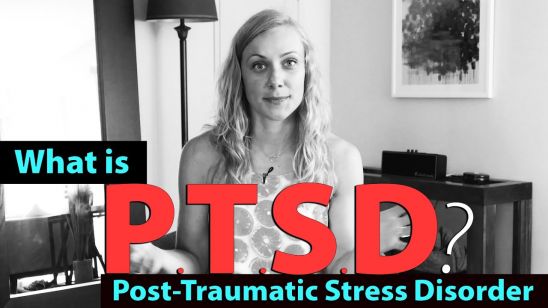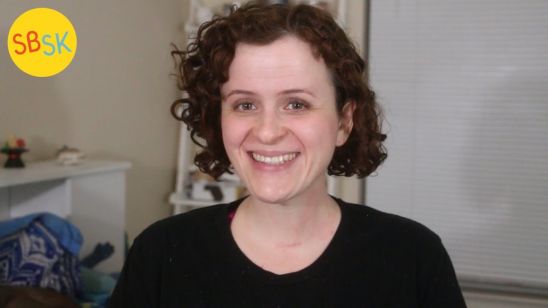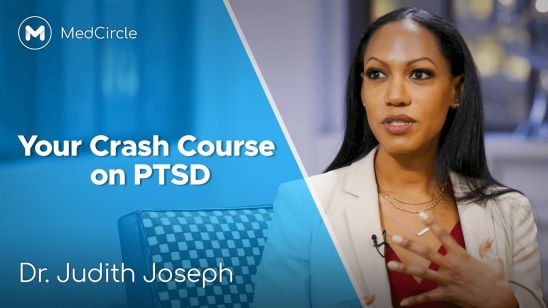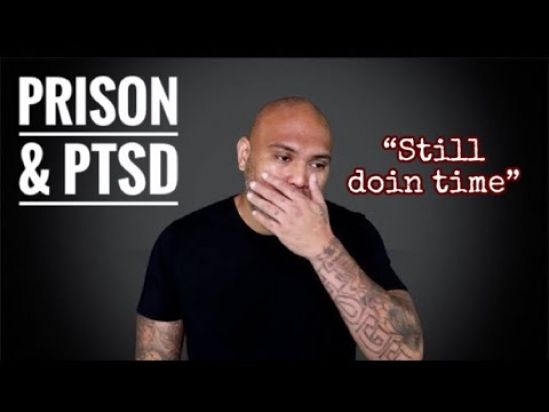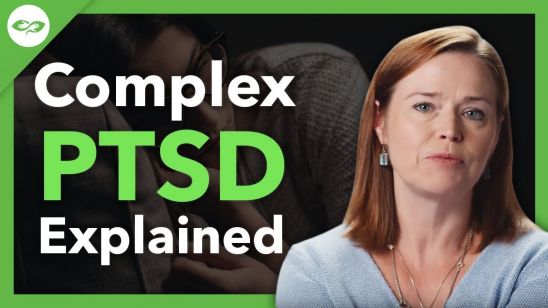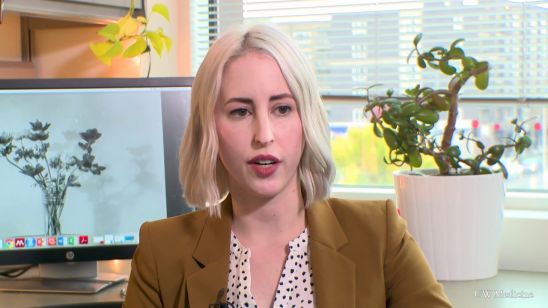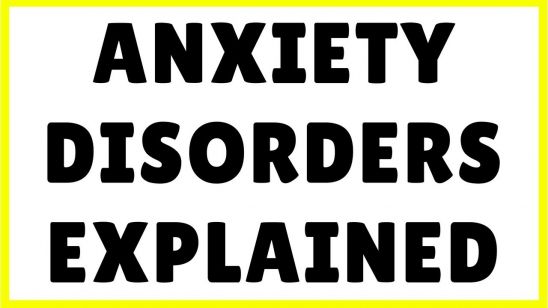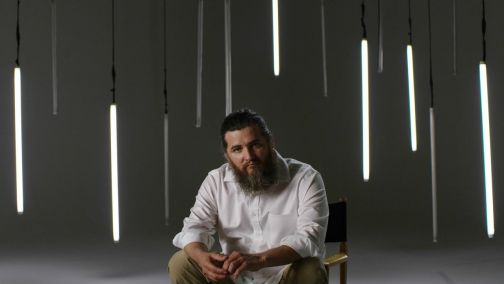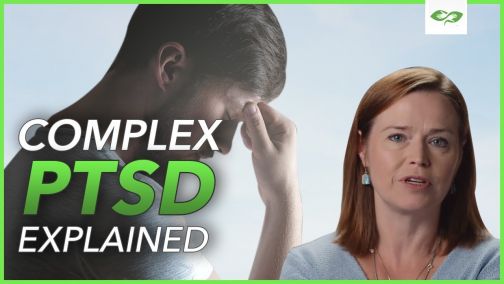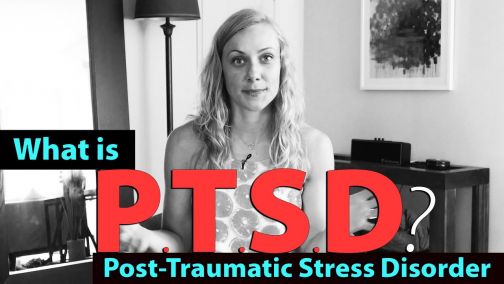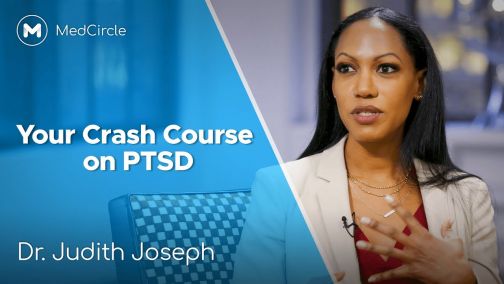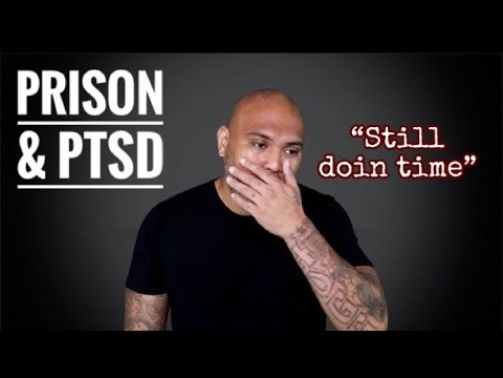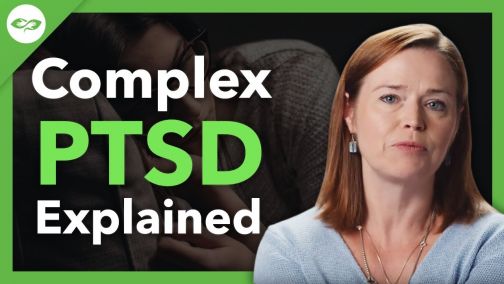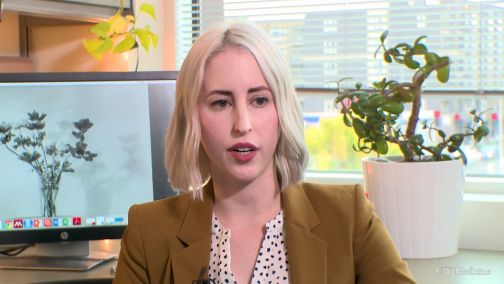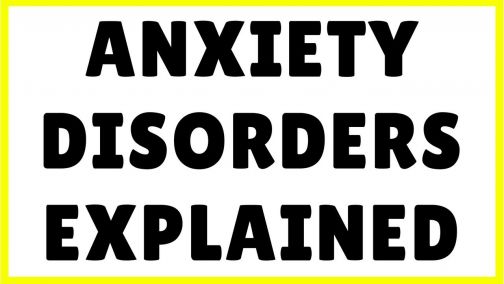Post-Traumatic Stress Disorder
Also known as PTSD
What is it?
It’s normal to feel shaken up and anxious after a traumatic experience. Things like car accidents, sexual assault and war can have a huge impact on a person’s emotional health. They might become depressed, have trouble sleeping or struggle to socialize for awhile until the shock subsides.
But for some people, symptoms don’t go away. Their fear and anxiety worsens over time, and triggers intense flashbacks and nightmares. They may even avoid certain places and people to try and keep their anxiety at bay.
This is called Post-Traumatic Stress Disorder or PTSD. Contrary to media representations of the disorder, it doesn’t only affect veterans or those who have seen combat. It can occur after a wide range of traumatic incidents. Not everyone who lives through trauma will develop this condition, and it doesn’t always appear immediately. Some cases take months or years to fully emerge. Roughly 3.6% of U.S. adults suffer from PTSD each year, and an estimated 7.8 million will experience it as some point in their life.
What are the symptoms?
PTSD symptoms fall into four categories: intrusive thoughts, avoidance, negative thoughts/feelings, and arousal. They can vary greatly in intensity and frequency. To be diagnosed, symptoms must be present for at least one month following the traumatic event.
Intrusive thoughts
Experiencing intense flashbacks, distressing dreams, and repetitive and unwanted memories of the event.
Avoidance
Purposely staying away from people, places and conversations that remind you of the event.
Negative thoughts/feelings
Feelings of hopelessness, guilt, fear or shame. This also includes feeling detached from others, and losing interest in doing things you used to love.
Arousal
Being irritable or angry, having emotional outbursts, engaging in reckless behavior, struggling to sleep through the night, and being “jumpy” or started easily.
A related condition, called acute stress disorder, shares the same symptoms as PTSD, however they last between three days and one month after the event, then subside.
What are some common warning signs?
PTSD is characterized by intense feelings of anxiety and fear, and may be accompanied by flashbacks, panic attacks and avoidance behaviors. Because of this, a loved one with the condition may display noticeable changes in their behavior. They may seem agitated and on edge in certain settings. You may even witness a flashback or panic attack while with them.
But sometimes, symptoms are less obvious. People battling chronic mental health conditions can learn to hide their pain from others. It’s possible to appear outwardly fine, while facing mental difficulties in secrecy. It’s important to remember that mental health conditions are invisible illnesses. Just because some people exhibit outward symptoms, doesn’t mean everyone will.
If you think a person in your life might have PTSD, pay close attention to how they’re doing in the different facets of their life. Are they avoiding specific scenarios more? Have they developed new or strange phobias? Are they struggling to do well at work or school? Are they refusing to discuss recent trauma? If so, they might be struggling with PTSD and you should find time to talk to them about their symptoms.
What causes PTSD?
The exact cause of PTSD is unknown. Doctors believe a range of factors play a role in its development, including:
Genetics
Certain people are more likely to develop PTSD and other anxiety-based conditions if they have a family history of them.
Biological
Some studies show that people with PTSD have abnormal levels of brain chemicals like adrenaline, or abnormalities in a part of the brain called the hippocampus.
Trauma
Traumatic experiences are thought to impact the likelihood of developing anxiety disorders later in life. For example, someone who grew up in a turbulent home may be more anxious than someone who grew up in a supportive one.
Environmental
Being in high stress environments for extended periods of time can trigger anxiety disorders.
How is it treated?
There are two primary treatment methods for PTSD — psychotherapy and medication. Healthy lifestyle habits can also help people cope. Maintaining a balanced diet, 8 hour sleep schedule, mindfulness regimen (like yoga, meditation or art therapy classes) and staying physically active, can ease the severity of symptoms. However, for many people with serious and prolonged anxiety, lifestyle adjustments are not enough to fully address their disorder.
A handful of therapeutic approaches may be recommended for treating PTSD. They all share the same end goal, of helping a person regain control of their life, minimize negative symptoms, and develop healthy coping mechanisms. Popular models include:
Cognitive Behavioral Therapy (CBT)
CBT is a therapeutic model that challenges negative thinking patterns and behaviors. It’s rooted in the idea that our attitudes greatly impact how we think and behave. In CBT, a therapist will help you replace negative thinking patterns and behaviors with more positive ones, in order to better manage worry and fear. A form of CBT called Cognitive Processing Therapy (CPT) is often recommended for people with PTSD.
Prolonged Exposure Therapy (ERP)
ERP is a form of therapy that exposes people to their fears and anxieties in order to minimize the stress associated with them. Patients work with their doctor to create an “exposure hierarchy” that they tackle together over time.
Eye Movement Desensitization and Reprocessing (EMDR)
EMDR is a form of therapy in which body-centric movements are used to confront traumatic memories and feelings. It is recommended for people who have trouble talking about their trauma.
Medication
Medication is often recommended alongside therapy. Different types of drugs may be used to treat different symptoms.
SSRIs, or selective serotonin reuptake inhibitors, are a form of antidepressant medication used to treat depression and anxiety. They work by enhancing the brain’s natural serotonin activity in hopes of increasing levels of happiness and pleasure. Well known examples include Lexapro, Prozac, Paxil and Zoloft. Another popular antidepressant used to treat Panic Disorder are drugs called serotonin-norepinephrine reuptake inhibitors (SNRIs).
An alternative to antidepressants, are anti-anxiety medications known as Benzodiazepines (i.e. Klonopin, Ativan, Xanax, etc.) These are normally used to provide short-term anxiety relief, and are not recommended for individuals who struggle with substance abuse problems as they can lead to a physical addiction.
It’s important to remember that treatment plans are personalized. If you’re seeking help, make sure you work one-on-one with a doctor to create a plan that fits your needs. Just because a medication or therapy helps someone else recover, doesn’t mean it’ll be the right solution for you. Don’t ever feel guilty about asking for help, taking meds or going to therapy. Addressing your mental health is a productive and courageous thing to do.
How can I help a loved one with PTSD?
It can be hard to know how to react when someone you love isn’t doing well. Do they want to talk about it, or would they prefer to keep their experiences private? Will you push them away by starting the conversation?
There are no easy answers to these questions. Every person handles their mental health differently. That said, we all want to feel loved and supported. Showing someone that you’re invested in their wellbeing can make a world of difference. Here are some ways to do so:
- Educate yourself: Read up on symptoms, treatment options, and healthy living recommendations. Try and understand what your loved one is going through so you are better equipped to talk to them about it. This will also make you a valuable resource when it comes time to find treatment.
- Encourage healthy living: Sleeping well, eating nutritional foods, staying active and limiting caffeine use can be game changers for someone with PTSD. If they’re surrounded by people who promote this kind of lifestyle, they’re more likely to form healthy habits of their own. Try joining a fitness class together, or cooking meals at home using healthy ingredients.
- Advocate treatment: Asking for help can be hard. Societal stigma often keeps people from opening up to others about their symptoms. Support your loved one by helping them research different treatment methods, or doctors in their area. If they’d like, go to a few sessions with them. Remind them that there’s nothing weird about getting help, and that you’re proud of them for following through.
- Listen: It’s common for people battling PTSD to feel alone, and like they don’t have anyone to talk to. Make time for meaningful conversations. Ask them how they’re doing. Let them talk and don’t discount their emotions. It is not your job to fix them, just to be there. If they are reluctant to talk about their experiences, do not push them.
- Accompany them: If certain settings are triggering, offer to go with them or stay by their side. Reassure them that everything will be alright. Stay calm even if their anxiety levels rise.
- Do things together: This includes seemingly normal activities, like shopping together, taking a walk, or watching a movie. This can help distract them from their trauma and encourage socialization.
- Don’t tell them to calm down: People with anxiety are often told to “get over it”, “worry less” or “chill out.” These statements downplay the emotions they’re feeling, and won’t help lessen their symptoms. Let them vent without judging.
Be patient: Don’t take it personally if they lash out at you, don’t answer text messages or socialize less. They are battling something that’s very hard to overcome. Their distance has nothing to do with who you are as a person. Keep showing up for them even when it feels like it’s not helping. The act alone lets them know that they have people in their life who care.
What other resources are out there?
Want to learn more, find a doctor, join a support group or speak to a counselor? The below resources might be able to help:
- National Center for PTSD
- Veterans Families United
- Military One Source
- Crisis Text Line
- BetterHelp
- Psychology Today Directory
- American Psychiatric Association
- Medicaid Eligibility Information
- Open Path Collective
- Resources for POC, LGBTQ+ and disabled individuals
- Anxiety and Depression Association of America
- National Network of Depression Centers
- Medicine Assistance Tool
- NeedyMeds
- Erika's Lighthouse
- Anxiety Network
- Anxiety Central Forums
Support our work
We’re on a mission to change how the world perceives mental health.
